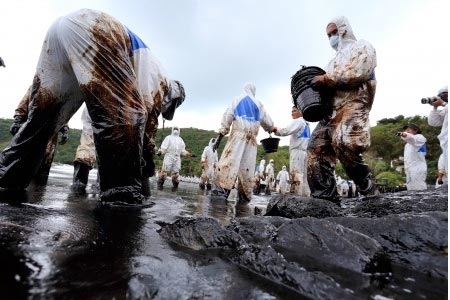Chemical Spills
Chemical spills can be in the form of liquids, solids such as pellets, gases, or vapors. They can be flammable (quick to burn or explode), corrosive (damaging to human tissue or other materials), or toxic (poisonous to humans and other living things).
The time to deal with a chemical spill is long before it happens, by rehearsing what you will do and obtaining the supplies you will need for self-protection and clean-up.

Here are some basic procedures for dealing with a spill:
Alert people in the area of the spill.
Call the appropriate emergency numbers, which should be posted at each telephone.
Attend to any injured persons, removing them from exposure and getting to a safety shower if necessary.
Depending on the nature of the chemical, you might need to open windows and doors to provide ventilation, close up the affected area to contain spills or turn off heat and other ignition sources.
If you are trained and authorized, use the appropriate materials to absorb or contain the spill. For instance, you might have kits to neutralize spilled acids or bases. For other chemicals, you could be required to sprinkle an absorbent litter on a spill or surround the spill with a dam.
Do not attempt cleanup under these circumstances:
-
You don’t know what the spilled material is.
-
You don’t have the necessary protection or the right equipment to do the job.
-
The spill is too large.
-
The spill is highly toxic.
-
You feel symptoms of exposure.
Follow procedures, keep safety in mind!!
Download flyer: STOTW_316_ChemicalSpills.pdf (337.69 kb)
Download Spanish flyer: STOTW_316_ChemicalSpills_esp.pdf (338.09 kb)

